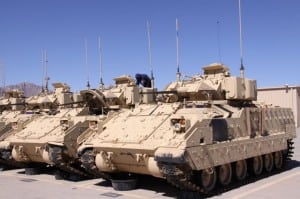
Included in an Army request to shuffle $916 million in fiscal year 2016 dollars among accounts is $27.8 million to fast track the purchase and installation of active protection systems (APS) on combat vehicles.The reprogramming asks for an increase in “combat vehicle improvement programs” from $344.4 million to $372.2 million in the current fiscal year. While that line item covers a variety of vehicle performance and systems enhancements, the $28 million jump is earmarked for non-developmental automatic missile shields for…

 By
By 








